Class Schedule
21 Aug | intro
23 Aug | clients |
Open Source |
VPN |
file transfer |
SFTP |
GitHub |
next session
28 Aug | servers
30 Aug | networks
04 Sep | basics lab
06 Sep | structural layer
11 Sep | presentational layer
18 Sep | working with layers
20 Sep | behavior layer
25 Sep | images & design
27 Sep | website lab
02 Oct | object layers
04 Oct | tools that read markup
09 Oct | document markup lab
11 Oct | spreadsheets, formulas & functions
16 Oct | data display
18 Oct | Fall Break
23 Oct | database tools
25 Oct | spreadsheets lab
30 Oct | relational databases
01 Nov | tables
06 Nov | relationships
08 Nov | input & output
13 Nov | SQL
15 Nov | complex queries
20 Nov | databases lab
22 Nov | Thanksgiving
27 Nov | presentation design
29 Nov | presentation delivery
04 Dec | presentation lab
13 Dec | 0800-1100 | final in class presentation

This work
is licensed under a
Creative Commons Attribution-NonCommercial-ShareAlike 3.0 Unported License.
home & schedule | class blog | syllabus | contact | grades
We want to be sure we grasp the relationship of clients to servers,
and have a shared vocabulary of terms.
Client-server computing
- the basis of much of what we will be doing
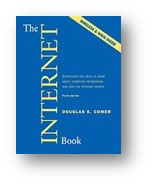
Client-server computing
is the interaction between two programs when they communicate across a network. A program at one site sends a request to a program at another site and awaits a response.
The requesting program is the client.
Assuming we are using our laptops as a client, we might want to know how laptops work.
The program satisfying the request is the server.
Assuming we want to retrieve something from a server over the web, we might want to know how web servers work.
client-server interaction is the basis of distributed computing
back to top
baseline understandings about the tools we will be using
How PCs work
Advice on how to deal with problems as they come up
- personal computer maintenance Windows OS
- personal computer maintenance Mac OS
- personal computer maintenance Linux OS
- Basic Computer Security from ITS
back to top
Terminology
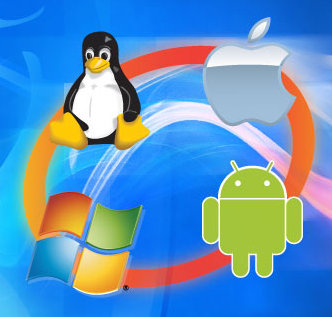
It's good to be cognizant of the relationship of memory to storage, and the specific meaning of each term.
What are operating systems? We are familiar with Windows and Apple on our clients, but Linux and Android are starting to become challengers.
Wikipedia lists lots and lots of operating systems.
What does open source mean?
back to top
one simple tool that we will use a lot
Learn how to use the screen capture tool.

If you want to capture the entire screen, press the Print Screen button and an image of the screen will be saved to your clipboard.
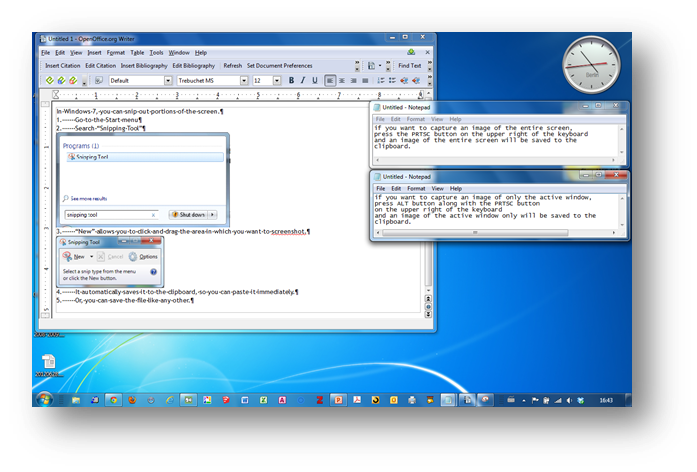
If you want to capture the active window, press the ALT button + the Print Screen button and an image of the active window screen will be saved to your clipboard.
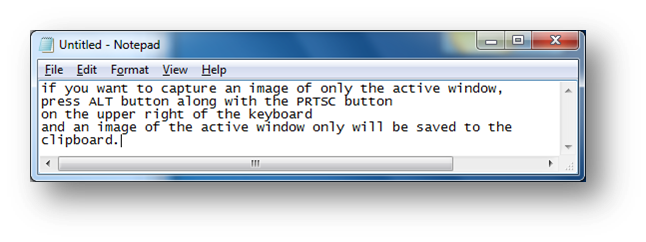
If you want to trim a portion of the screen, find the Snip tool, pick the area you want to snip, and an image will be saved to your clipboard.
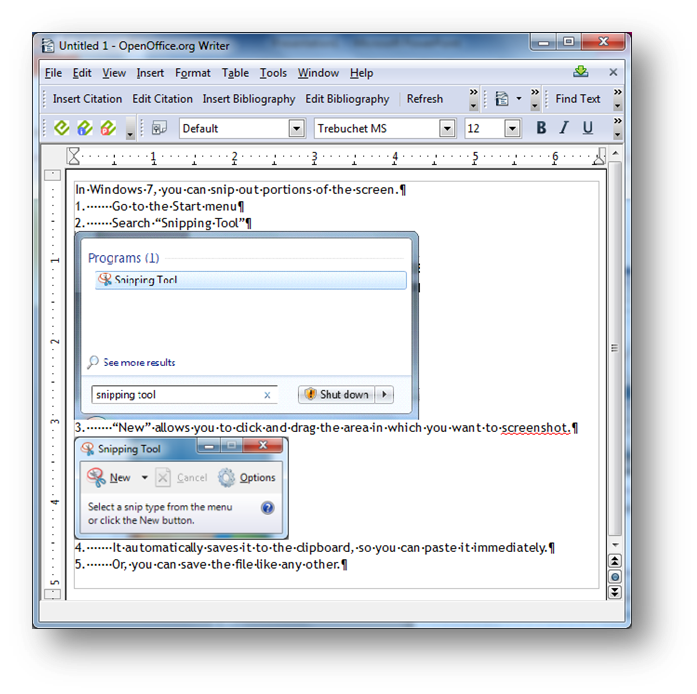
If you use a Mac, there are several keyboard combinations that can be used to take screenshots in Mac OS X
Mac users
We will use Windows computers at the instructor desk. On occasion, the interface in Windows will not match the interface in a Mac. While we will try to have examples for all operating systems, it will be useful if, when you find that the Mac view is different, that you take a screenshot of the Mac environment and send it to the instructor. The instructor will ensure that the Mac screenshot is integrated into the class pages pertaining to the situation in which the screenshot was taken.
back to top
clients | Open Source | VPN | file transfer | SFTP | GitHub | next session

